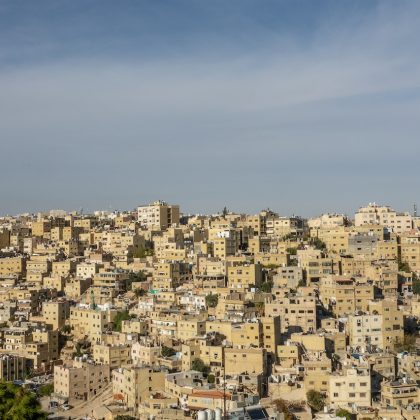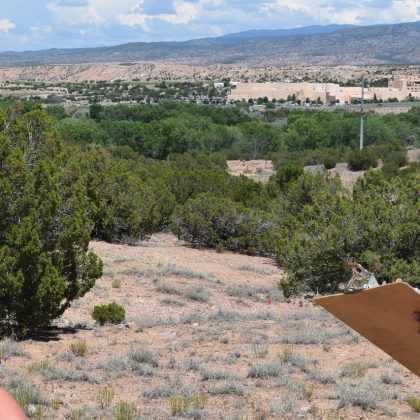An investigation of the fatal 1985 Manchester Airport B737 fire
The paper, ‘Numerical investigation of the fatal 1985 Manchester Airport B737 fire’ published in the Aeronautical Journal, Vol 121, Number 1237, pp 287-319, 2017 by Edwin R Galea, Zhaozhi Wang, and Fuchen Jia, provides an explanation for why 55 people lost their lives in the B737 fire at Manchester airport in 1985.
On August 22 1985, the British Airtours B737 Flight 28M was taxiing for take-off at Manchester Airport with 131 passengers and six crew, bound for sunny Corfu. But the flight was heading instead for tragedy. An uncontained failure of the engine on the left wing during take-off resulted in a fire that claimed 55 lives, and changed the course of aviation safety around the world, as well as the career of a young research scientist.
The captain aborted the take-off, turned the aircraft off the run-way and ordered an evacuation from the right side. There were no operating procedures advising him how to position the aircraft, and it ended up in a situation that allowed a light wind of 3.0 m/s to blow the external fire onto the fuselage, resulting in rapid burn-through into the cabin.
The four cabin crew battled heroically to get everyone off, but circumstances beyond their control meant that one exit was non-viable and precious seconds were lost in opening the exits that were eventually used. The right rear exit was made non-viable by smoke and flames blowing from the opposite side of the aircraft, the right overwing exit was a struggle for the passenger5 sitting next to it to open, and the front right exit malfunctioned and jammed.
A total of three exits – the two at the front and the right overwing exit – were eventually operational. It took 25 seconds to open the front left, 70 seconds to open the front right and 45 seconds to open the overwing exits. In mandatory industry certification demonstrations, the front exits are normally opened in under 10 seconds, while overwing exits are typically opened within 12 seconds. By the time the three exits were operational, the aircraft was filling with highly toxic hot fire gases, and visibility was reducing rapidly. The last surviving passenger was dragged out after about 5.5 minutes.

Analysis of this pivotal incident led to the improvement of aircraft evacuation procedures, cabin layout, cabin interior materials and aircraft operations. But it would take the development of a new scientific discipline to reveal the significance of the delays in opening the doors, the impact of the wind speed and direction, and the potential benefits that modern cabin materials would have conferred.
My career in fire safety engineering started in 1986, with an investigation of the fire dynamics of this incident, using a new mathematical modelling technique called fire field modelling, which utilises computational fluid dynamics (CFD). This research would eventually lead to the development of the CFD fire simulation software, SMARTFIRE. It would also lead to my research into the psychology of human behaviour in emergency situations, because fire dynamics alone, could not explain why 55 people lost their lives that tragic day. This research resulted in the development of the EXODUS suite of evacuation software, and to the formation of my research group, the Fire Safety Engineering Group (FSEG) at the University of Greenwich. For the past 30 years, FSEG, has been dedicated to understanding both fire dynamics and human behaviour during emergencies, and using this knowledge to ensure that our fire and evacuation simulation software remain world-leading and cutting edge.
Our SMARTFIRE software now has advanced CFD modelling capabilities with sophisticated pool fire and combustion models. And we have built into our airEXODUS evacuation simulation software unique capabilities to accurately model the movement and behaviour of passengers attempting to evacuate from a burning aircraft. The model represents complex behaviour, such as attempting to climb over seats, and crawling under hot toxic smoke, and it simulates the effect of inhaling toxic fire products.

FSEG also pioneered the concept of coupling the detailed fire dynamics produced by CFD fire simulation, with evacuation modelling. Only then, could we understand the complex interaction of a rapidly developing wind-driven fire and human behaviour within the crowded and restricted space of an aircraft fuselage. And only now have our models achieved the sophistication to accurately reproduce the Manchester fire and evacuation, so that we can explore why so many died in this incident.
The coupled fire and evacuation computer simulations successfully reproduced the actual incident, not only predicting the number of fatalities, but providing a reasonable prediction of the location of the bodies and the damage to the cabin interior.

The simulations demonstrated that the short delay in opening the three viable exits directly resulted in the large loss of life. Had they opened in the time achieved in certification trials, it is likely that all the passengers would have been able to evacuate safely. The Manchester incident demonstrates that during an aircraft fire, literally every second can make the difference between life and death. This is why it is essential to have well-trained cabin crew at each exit, to ensure that passengers seated beside overwing exits are capable of opening them in seconds, and to not waste time retrieving luggage from overhead bins during an emergency evacuation.
The FSEG simulations also demonstrated that it would only take a relatively light wind of 1.5 m/s to cause the external fire plume to lean onto the fuselage as it did so tragically that day.
In the Manchester incident, fire burned through the fuselage in about 75 seconds. Simulations show that a delay of a further 50 seconds could, potentially, have allowed all the passengers to escape. In 1985, the insulation materials typically used inside the cabin’s aluminium skin had a ‘burn-through resistance’ of around 52-96 seconds. New generation insulation materials have a significantly improved resistance. The research suggests that the use of these materials would have saved the Manchester victims.
The paper is dedicated to the 53 passengers and two crew who lost their lives that tragic day. It reflects our determination to learn the lessons of Manchester, and similar incidents, to help ensure that these events are survivable.
The full article, ‘Numerical investigation of the fatal 1985 Manchester Airport B737 fire‘, will be freely available for two weeks.
NOTES:
(1) The phrase ‘my career’ in the 6th paragraph is hyperlinked to a web page describing my work. The link is: http://staffweb.cms.gre.ac.uk/~ge03/
(2) The phrase ‘Fire Safety Engineering Group (FSEG)’ is hyperlinked to the FSEG web pages. The link is: http://fseg.gre.ac.uk/
(3) The word SMARTFIRE in the 6th paragraph and FIRE in the 5th last paragraph are hyperlinked to the FSEG YOUTUBE animation generated from the SMARTFIRE fire simulation of the Manchester fire. The link is: http://bit.ly/FSEG-Manchester-Fire
(4) The word airEXODUS in the 6th paragraph and EVACUATION in the 5th last paragraph are hyperlinked to the FSEG YOUTUBE animation generated from the airEXODUS simulation of the recreation of the Manchester coupled fire-evacuation and the airEXODUS simulation representing the coupled fire-evacuation simulation assuming that the three exits opened on time. The link is: http://bit.ly/FSEG-Manchester-evacuation







An excellent article! That said, from a captain’s POV the golden rule is simple: STOP AS SOON AS YOU CAN ON THE RUNWAY AND GET THEM OUT. Like the article says “every second counts.” Wasting time taxiing off the runway can claim lives, or–in the case of the Saudi L 1011 ALL of the people on board perished. Do not worry about wind direction–the in use landing runway is chosen for its favourable wind direction. In the USA (and perhaps elsewhere in the World) airlines give a brief instruction to passengers who sit next to over wing exits and expect them, without any proper training, to carry out their instructions like professionals. On one occasion a pretty young girl was given one of these seats when I was travelling. These seats are prized because of their extra leg room. I had informed the boarding planners that I had flown for nearly 20000 hours, been a Chief Pilot on a number of planes and been a boss of safety in the airline that I flew. Typically the girl got the seat. I was seated behind her and after the hasty briefing she was given I asked her to repeat the instructions. She could not remember them. I told her to leave it to me if there was an emergency. THIS is supposed to enhance flight safety?